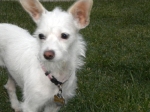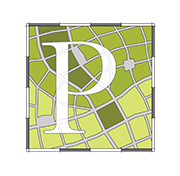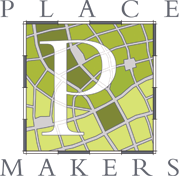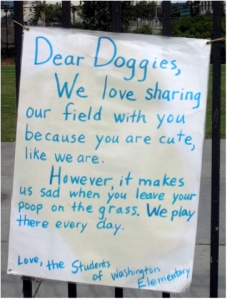A Placemaking Journal
Urban Renaissance Gone to the Dogs
Downtown San Diego has gone to the dogs.
Having grown up in San Diego, I’ve thoroughly enjoyed experiencing our downtown’s renaissance. Its revitalization has altered our cultural patterns and social connectivity. Today’s downtown is host to vibrant new neighborhoods, monthly cultural events, and the Gaslamp District’s rise (or demise) to Bourbon Street-esque nuttiness, as well as a baseball park, convention center, new library, and new city hall, the usual suspects of downtown revitalization over the past twenty years.
While I wasn’t around when downtown was vital for its first eighty years or so, I do remember what it was like in the early 1970s. I usually experienced it when my parents would leave me in the car while they shopped or ran errands (they also smoked, spanked, didn’t wear seatbelts or motorcycle helmets, sprayed asbestos everywhere, and used bleach to clean the Formica while letting me run around unsupervised until nightfall). As a kid, downtown was a scary mix of flop houses, locker rooms for sailors to change their clothes, bars, strip joints, X-rated movie theaters, warehouses, and buildings that people had abandoned for glittery stucco boxes newly built out in the suburbs. Growing up in the land of similar houses, arterials, cul-de-sacs, 7-11’s, those-kids-on-the-other-street, open space easements, freeways under construction, and backyards with a menagerie of dogs and cats, it was like another world.
I distinctly remember locking the car doors and hiding in the back seat.

Today’s downtown has shiny new blocks of residential towers wrapped with townhouses, courtyards, offices, shops, trolley stations and 7-11’s, all sometimes within the same building. Now filled with childless professionals, college students, retired elderly, and rock and stroll hipsters, there are a few faint suburban echoes that still resonate.
Most noticeable are the dogs… a lot of dogs. Dogs everywhere. The homeless and late night drunkards can no longer be blamed for the prevalent stench of urine in our city streets as every hipster and retiree are prancing all over downtown with little Chihuahuas and giant Great Danes. It seems everyone I pass has a plastic baggy filled with doggie-doo in his or her hand, thereby making the handshake or polite wave a real adventure. Plus, trash cans are filled with the stuff.

The numbers of retail shops that cater to dogs nearly outnumber those for people. You pass several dog washes, dog sitters, dog groomers, dog toys, personal dog trainers, and dog psychotherapy stores before finally finding a restaurant. Dog-friendly, of course.

Downtown’s playground structures are stained yellow as these are the only outdoor places dog owners can walk to, and everyone is frustrated with this. Both the dog owners, with few places to go, and those eleven moms who live downtown, watching their kids climb all over deserted playgrounds.
Dogs are now common downtown for three main reasons: First, our suburban generation grew up with a population explosion of dogs in the backyard where they mostly served as guards, playmates and/or walking companions. Second, since the 1980s, the dog’s role as protector has changed to now serve as emotional support for their owners. And, third, dogs have proven to be great social connectors.
Today, we all understand the social advantages of urban neighborhoods over suburban developments. However, in re-inhabiting our downtown, we wrongly assumed that social interactions would be based around shopping as a leisure activity and over-zoned our ground floors with commercial space while under planning for interactive civic space. Due to the economic downturn and mechanical-scaled towers, many people are not able to publicly display themselves on a front porch, stoop, step or balcony, as the majority of downtown’s tower blocks are accessed through a private, guarded lobby entrance.
Interestingly, people have gotten around this designing-for-fear-and-security mistake by using the pretense of walking or caring for pets to socialize on city streets.
Want to meet that attractive single person walking down the street? Rather than the initial, awkward interruption necessary to introduce each other and talk face-to-face, it’s easier to begin talking about that cute dog first. Then people can ease into a conversation over a coffee, make plans to meet up for drinks after work, and then finally end up discussing the need to move out of downtown when a kid starts to show up several months later. Voila… urbanism works its magic again!

Interestingly, the make and model of your dog now appears to be supplanting the car as our cultural status symbol. Today, people stand around a small park and talk about dogs and breed the way we use to stand around a popped open hood of a car and talk about engine points, heads and manufacturers.
A couple of years ago I helped with downtown San Diego’s Open Space Needs Assessment Plan and the overwhelming priority was the need for a Dog Park. It became a glaring omission in our collective attempt to attract suburbanites to live back downtown. Our residential policies required a minimum number of large, 3-bedroom units and to fund children’s playgrounds as civic spaces, which were intended to attract larger families. The 2005 Community Plan valued green roofs over civic spaces and we still ended up with 80% non-traditional families at fewer (1.5) persons per households but sporting 2.5 dogs that act like dogs in very urban streetscapes. Fortunately, a dog park is now in the works.
As we continue to build more urban developments, these dogs may actually be viewed as an indicator species for designing towards the next urbanism. First, we know that well-defined and varied civic spaces are important to our daily lives for a variety of reasons. Second, we should be allowing for a middle ground between uber-urban towers and sub-urban townhouses. The Vancouver model, a point-tower with a townhouse wrap, is a great invention, but it is only one of several block types in our urban design toolbox. Even Vancouver understands this.
Finally, maybe now we can design our cities as if we are all a little more comfortable inhabiting an urban environment. In response to walking the dog, we are now able to build more humane and varied buildings that front the street. We can build more units and frontages that are exposed directly to the street and civic spaces. And, we can actually dare to reconfigure our 1950’s one-way streets downtown into complete streets, configured for all users rather than just efficient car mobility.
In fact, when it finally comes time to get the ball rolling with an awkward, face-to-face conversation with my local traffic engineer and fire marshall, I think I’ll use a cute little dog to break the ice.
And to bite ’em, if they prove too obstinate.
–Howard Blackson








